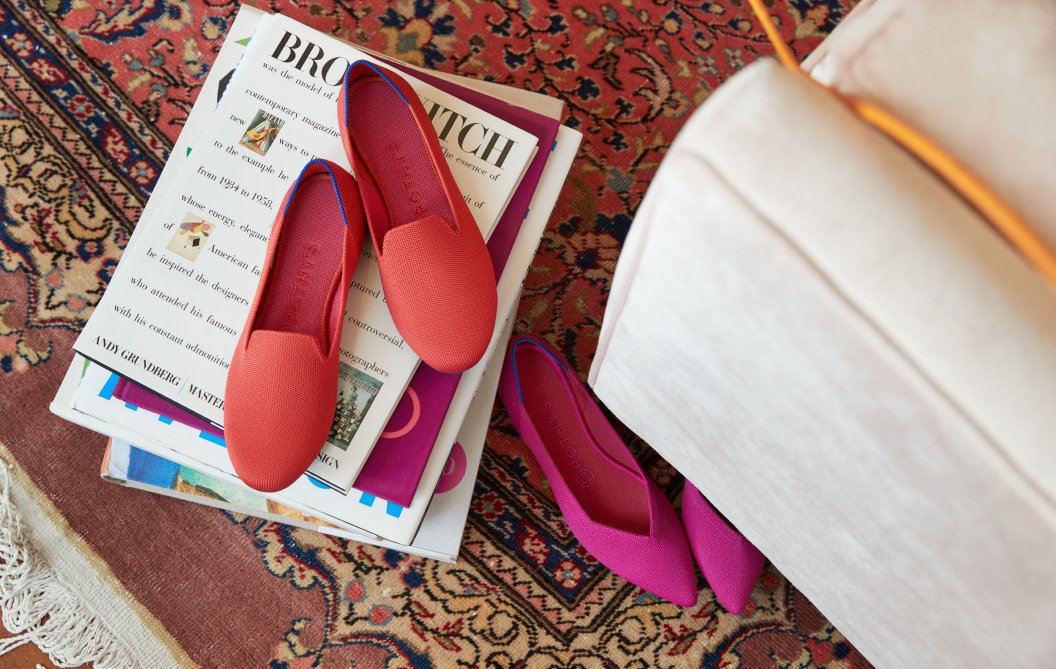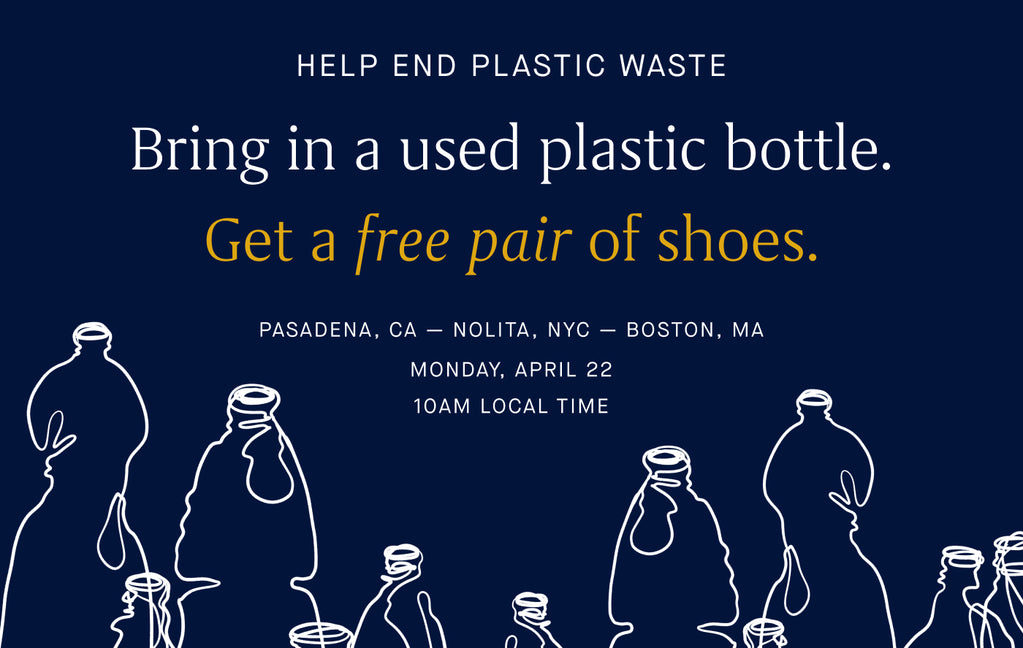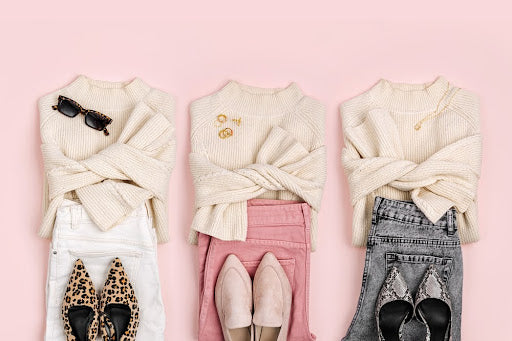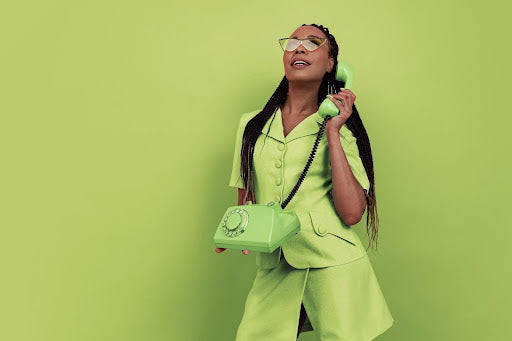6 stylish stay at home sustainable fashion tips.

They say that when you look good, you feel good. So if you’re cooped up at home, getting all dressed up with nowhere to go may be the mood booster you never knew you needed. And since you’re spending more time indoors, why not slip out of your pajamas and into some stylish staples?
Sustainable fashion helps you treat yourself and the planet—all while staying comfy and chic. If you’re searching for clever ways to incorporate sustainability into your stay-at-home wardrobe, we’re here to show you how.
What is sustainable fashion?
Sustainable fashion is a movement to foster massive and meaningful change in the modern fashion industry by focusing on greater ecological integrity and social justice. Sustainable fashion goes beyond mere textiles and products—it aims to create a circular, symbiotic system that reduces the harrowing effects of large-scale human consumption.

Despite this definition, “sustainability” can mean different things to different people. At Rothy’s, our approach to sustainable fashion is marked by careful consideration of the impact of everything we do and create. From our women’s flats to our collection of bags, each and every piece produced prioritizes our planet, our global community and our fashion-forward buyers.
Across the fashion industry, sustainable fashion takes shape in many eco-focused forms that collectively aim to practice mindful consumption that betters our planet, including:
-
Zero Waste: Zero waste fashion is best embodied by efforts to utilize all materials to their full capacity without producing material waste. Zero waste fashion is all about creating a circular system and recycling, repurposing and capitalizing on every shred of usable textiles.
-
Ethical: Ethical fashion focuses on the social and environmental footprint of the clothing production process and aims to uplift the working conditions of laborers across the globe.
-
Vegan/ Cruelty-Free: Vegan and cruelty-free fashion is clothing that ensures no animals are hurt or harmed during the production process. This also means all garments are free of any animal by-products and were not tested on animals at any point.
- Recycled/Upcycled: Recycled and upcycled fashion refers to the production of existing clothing that is repurposed into a new item. Both of these types of recycled fashion can be done using either pre-consumer or post-consumer waste.
Why sustainability matters.
In a world so vast and an industry so far-reaching, it’s easy to believe that your small choices have no major implications. However, each step that we take away from fast fashion and toward sustainability helps to create a world of difference.
Fast fashion is rapidly manufactured on-trend clothing that is produced with little regard for its environmental impact and treatment of workers. Decades ago, the fashion world used to work on four distinct seasons: winter, spring, summer and fall.
Today, there are as many as 52 fashion micro-seasons per year. In order to meet such high turnover demand, sacrifices are made to keep up with the cycle of careless production and endless consumption. And these sacrifices almost always tend to harm the people and the planet we call home.
Because clothing plays such an important role in our everyday lives, it’s one of the easiest and most accessible ways to enact positive change. Sustainability matters because it protects, preserves, promotes and revolutionizes the things that matter most.
Tips for embracing sustainable fashion at home.
Even when staying inside, every day is an opportunity to adopt sustainable practices. With these 6 tips, we’ll walk you through some planet-friendly ways to embrace sustainable fashion from the comfort of your own home.
Tip #1: Channel your comfort levels.
Working from home comes with a slew of attractive perks—from eliminating your daily commute to allowing you to create your perfect working environment, what’s not to love? If you enjoy having a routine that gets you out of your pajamas, but are still looking for the all day comfort that jeans just can’t deliver, we recommend opting for feel-good looks that are casual, chic—and most importantly, comfortable.

Tip #2: Slide into a pair of Rothy’s.
A breath of fresh air from your very first wear, Rothy’s women’s shoes have helped keep millions of plastic bottles out of landfills. Knit with our signature thread spun from recycled plastic bottles, each of our stylish silhouettes are the result of mindful production practices that put our planet and our people first. Now that’s sustainable fashion you can feel good about.

Whether you’re lounging around the house or basking in the sunshine of your backyard, slipping into a comfortable pair of Rothy’s flats is the perfect finish to any stay-at-home look. Check out these stylish slip-on shoes.
-
The Flat: A modern, sustainable take on the classic ballet flat.
- The Point: This timeless style is sharp spin on the pointed toe ballet flat.
-
The Loafer: The essential high-coverage slip-on women’s loafer.
- The Mary Jane: This pointed ballet flat with bow straps is a chic take on The Mary Jane.
- The Sneaker: Versatile street style in the form of a seamless slip-on sneaker.
Tip #3: Create a capsule wardrobe.
Capsule wardrobes are carefully curated closets comprised of clothing that make coordinating complete looks a simple, yet effortlessly stylish experience. To create a capsule wardrobe, edit down your collection to the core essentials that are the most versatile in every department. Follow these three key steps to begin devising your very own capsule closet.

- Reduce: Repurpose or donate garments that don’t match your desired minimalist approach.
-
Establish: Develop an idea of what pieces you want your capsule wardrobe to include and the standard you’ll hold yourself to when it comes to purchasing new items.
- Build: With a fleshed-out understanding of what items will comprise your closet, you’ll be able to identify any gaps that may need to be filled. When shopping for those missing or desired items, be sure to ask yourself these capsule-conscious questions first:
- Does this item match my style concept?
- Will this item fill a gap in my wardrobe or saturate it?
- Can I pair this item with at least four outfits?
- Is this item sustainably made?
Tip #4: Purchase with purpose.
Sustainable fashion is all about investing in higher-quality pieces that are designed to last longer and serve the earth well. At Rothy’s, we make products that are both sustainable and durable—so that your style staples can stay by your side.

The reality of modern-day hyperconsumerism is that we often end up buying things we don’t necessarily need—and the result of this ends up being careless spending. Training yourself to purchase with purpose means taking the time to research brands, check clothing tags and set limitations.
Tip #5: Care for your clothing.
Caring for your clothes goes far beyond a cold wash cycle and an air dry. Attentive, meticulous care for your garments can extend the lifecycle of your favorite pieces and allow you to relish in increased longevity of your wardrobe.

All pieces of manufactured clothing come with an attached tab (typically located inside of the garment) that details how to properly care for your pieces. While you can take note of each item’s unique care instructions, it may be easier to simply follow these easy tips to maintain your clothing’s quality, shape and durability:
- Wash less frequently—too many washes or too much detergent can damage your pieces.
- Fold clothing along the seams to avoid shape loss or unnecessary wrinkling.
- Skip the iron and steam your wrinkly numbers.
- Avoid dryer cycles where possible.
Tip #6: Repurpose old pieces.
Increasing the life cycle of a garment is another clever way to battle the effects of fast fashion. Whether that means repurposing an old white tee into a dishcloth, donating gently-used denim to a non-profit organization, or organizing a clothing swap with friends or family, finding a new purpose for your pre-loved garments keeps them out of landfills.

























